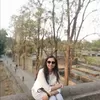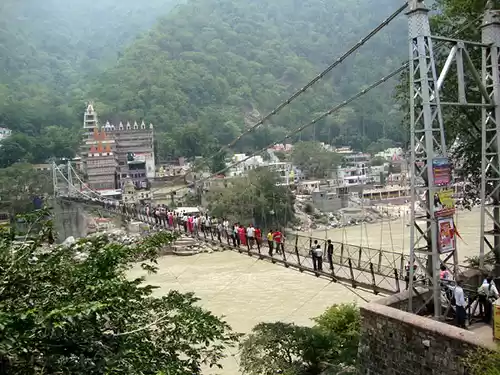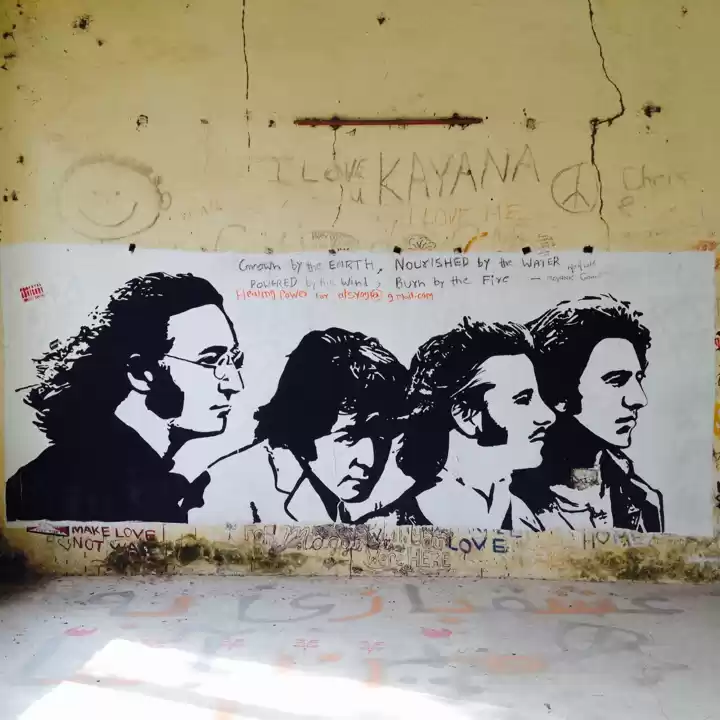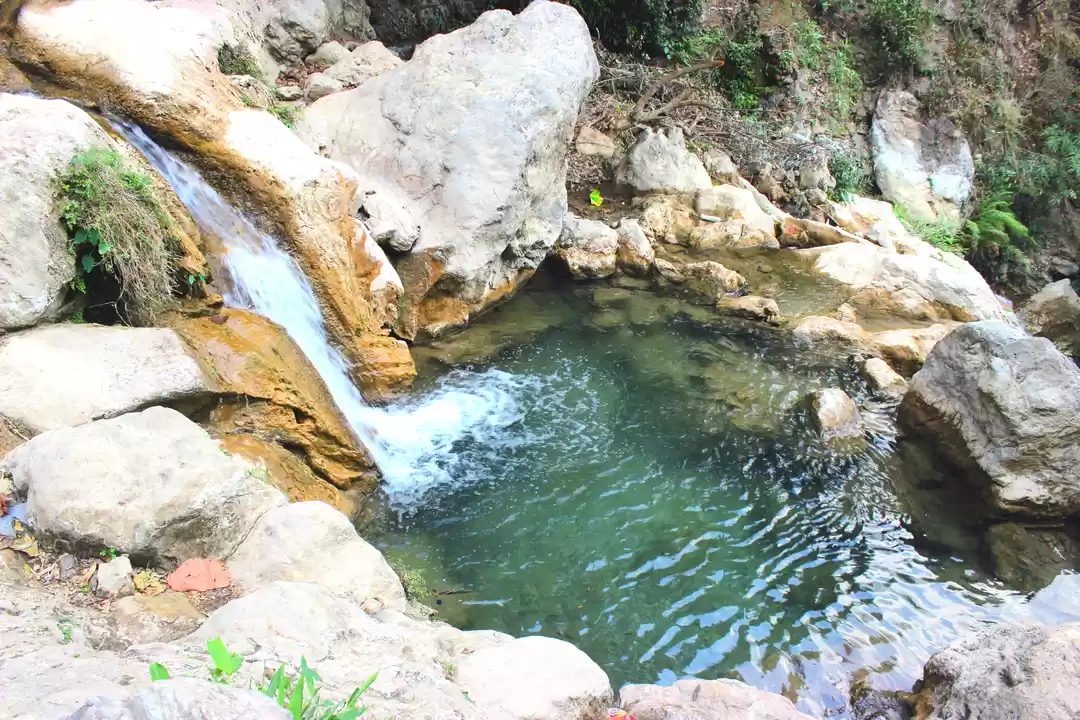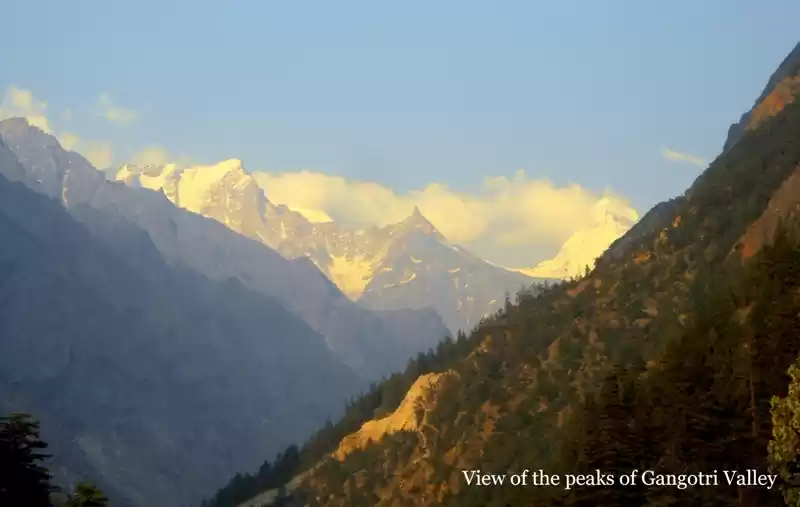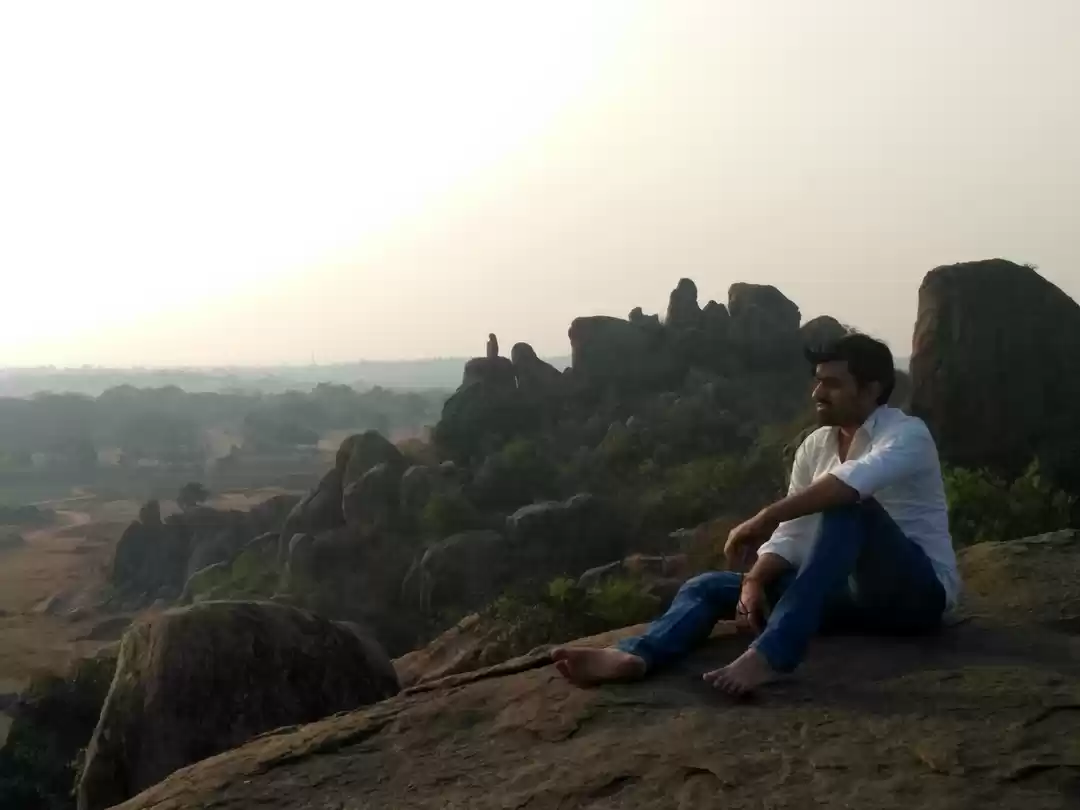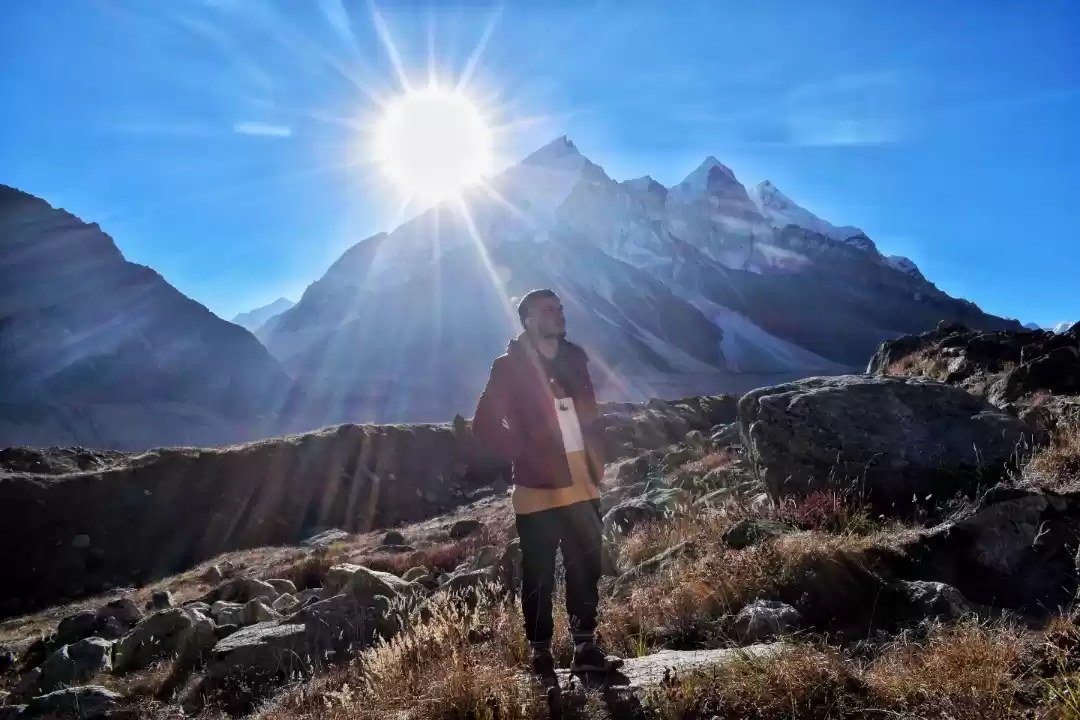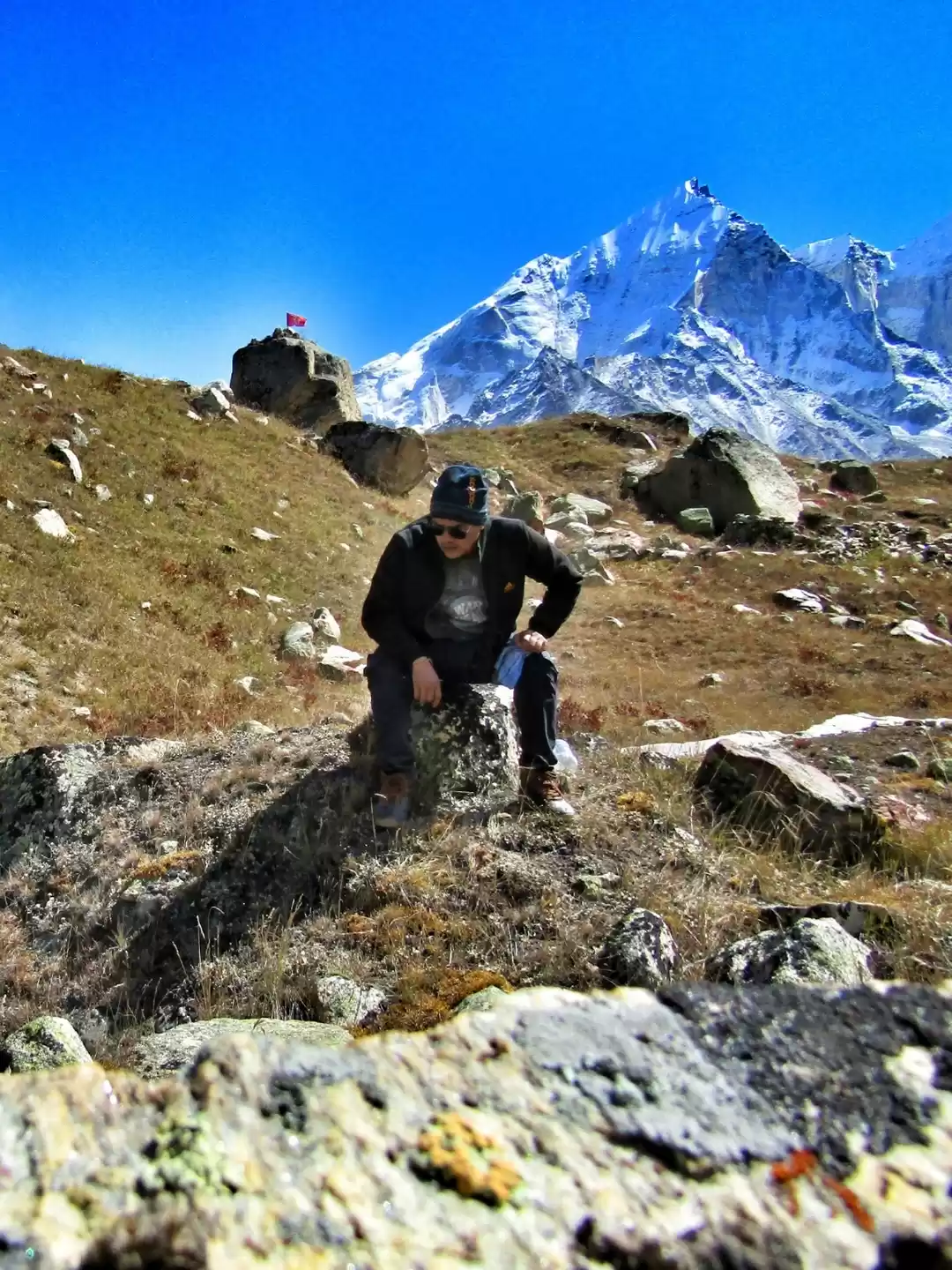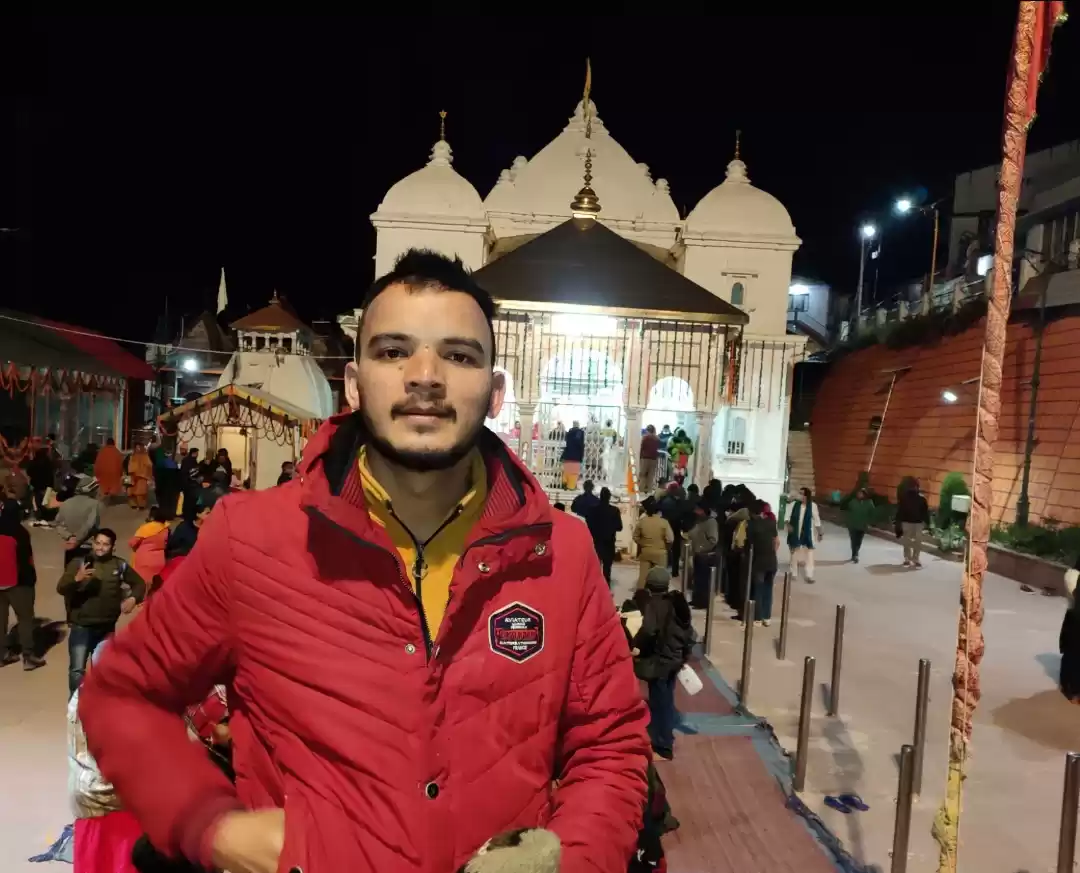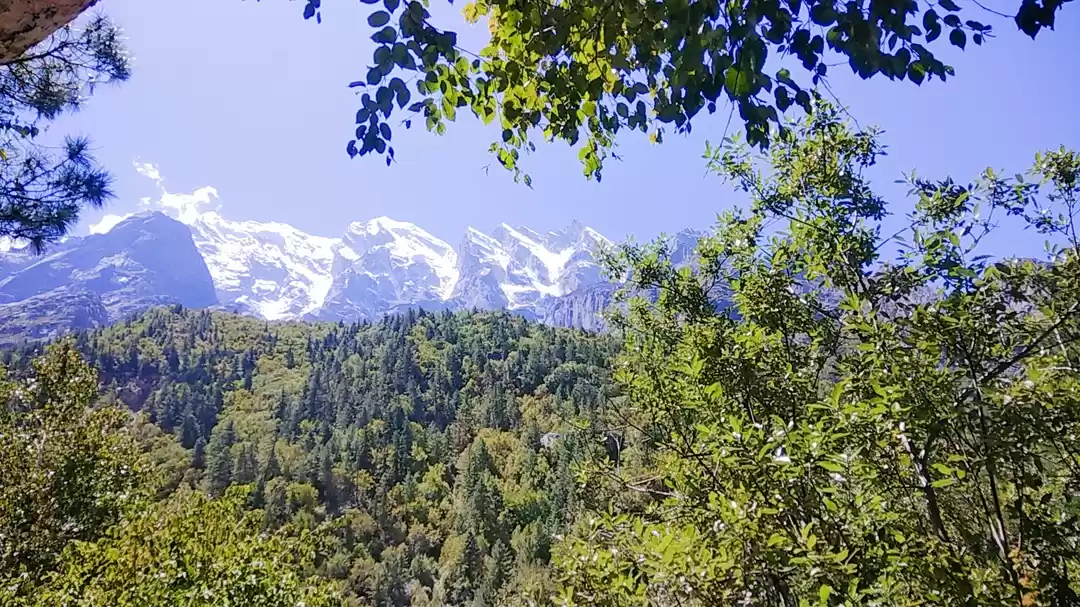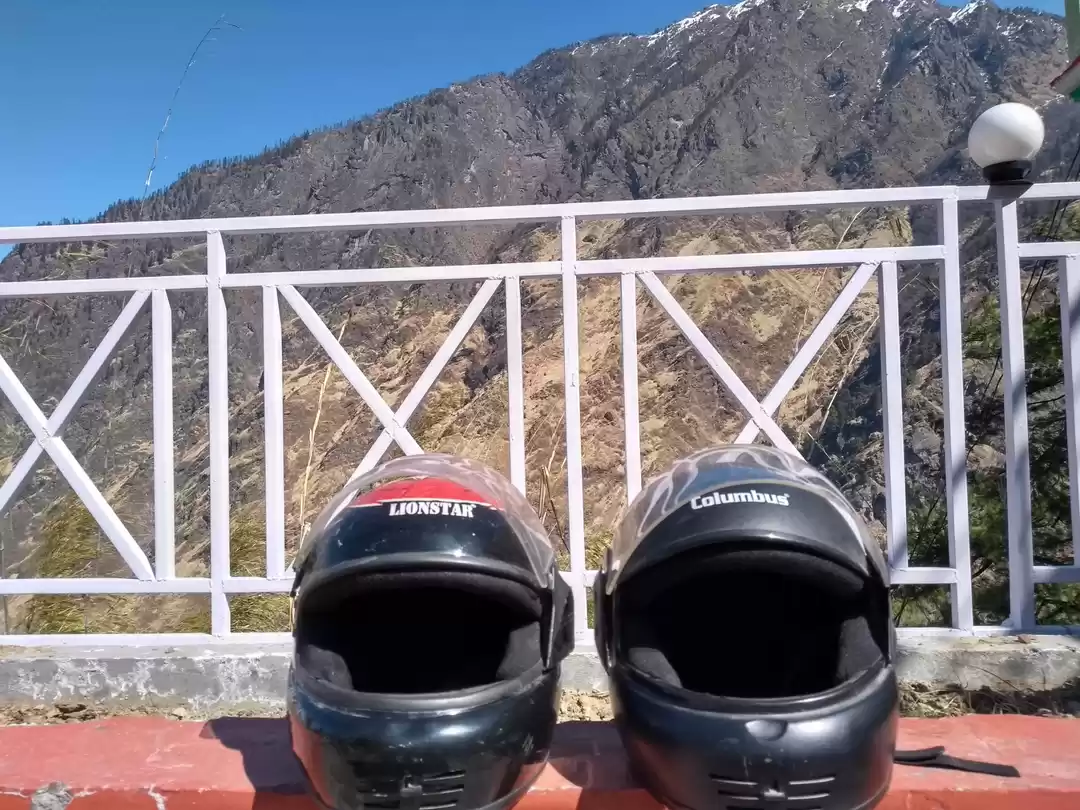Are you looking for a place where you can experience the bliss of nature, the thrill of adventure, and the peace of spirituality? If yes, then Tapovan Joshimath is the perfect destination for you. Tapovan is a high-altitude meadow near Joshimath, famous for its hot springs and mountain views. It is also a gateway to Bhavishya Badri, one of the five Badri shrines in Uttarakhand.
In this article, we will tell you everything you need to know about Tapovan Joshimath, including its history, culture, attractions, trek details, tips, and FAQs. Read on to discover why Tapovan Joshimath is a mini heaven on earth.

History and Culture of Tapovan
Tapovan means a place of meditation or penance. It is said that Tapovan was the site where Lord Lakshman, the brother of Lord Rama, performed austerities after the epic war of Ramayana. According to legend, he pierced the earth with his arrow and created a hot spring, which is now known as Tapovan Kund. The water of this spring is believed to have medicinal and healing properties, and many pilgrims and tourists take a dip in it.
Tapovan is also considered as a gateway to Bhavishya Badri, one of the five Badri shrines in Uttarakhand. Bhavishya Badri is a small temple dedicated to Lord Vishnu, located at a distance of 3 km from Tapovan. It is believed that in the future, when the present Badrinath temple will be inaccessible due to a landslide, Lord Vishnu will shift his abode to Bhavishya Badri. Hence, many devotees visit Bhavishya Badri to seek the blessings of Lord Vishnu.
Tapovan is home to various communities, such as the Bhotias, the Garhwalis, the Tibetans, and the Nepalese. The Bhotias are the indigenous people of the region, who are known for their woolen products and handicrafts. The Garhwalis are the dominant community of Uttarakhand, who are known for their culture and cuisine. The Tibetans are the refugees who settled in Tapovan after the Chinese invasion of Tibet. They are known for their monasteries and Buddhist practices. The Nepalese are the migrants who came to Tapovan for work and trade. They are known for their hospitality and friendliness.
Attractions of Tapovan
Tapovan has many attractions that make it a popular tourist spot near Joshimath. Some of the main attractions are:
Tapovan Kund: This is the hot spring that was created by Lord Lakshman’s arrow. The water of this spring is rich in sulphur and minerals, and has a temperature of around 55°C. It is said that bathing in this spring can cure many skin diseases, arthritis, and rheumatism. The spring is surrounded by lush greenery and offers a stunning view of the snow-capped peaks of Nanda Devi, Dronagiri, and Chaukhamba.
Mountain Views: Tapovan is blessed with a panoramic view of the Himalayan ranges. From Tapovan, you can see some of the highest and most beautiful peaks of India, such as Nanda Devi, Dronagiri, Chaukhamba, Neelkanth, Hathi Parvat, and Ghori Parvat. The sunrise and sunset views from Tapovan are especially mesmerizing, as the golden rays of the sun illuminate the mountains with a divine glow.
Flora and Fauna: Tapovan is a paradise for nature lovers, as it has a rich and diverse flora and fauna. The meadow of Tapovan is covered with colorful flowers, such as rhododendrons, orchids, primulas, and alpine roses. The forest of Tapovan is home to many animals, such as deer, foxes, leopards, bears, and monkeys. The sky of Tapovan is filled with many birds, such as eagles, vultures, partridges, and pheasants. Tapovan is also a habitat for many rare and endangered species, such as the snow leopard, the Himalayan musk deer, and the Himalayan monal.
Nearby Places of Interest: Tapovan is not only a destination in itself, but also a base for exploring many other places of interest in and around Joshimath. Some of the nearby places that you can visit from Tapovan are:
Auli: Auli is a famous ski resort, located at a distance of 16 km from Joshimath. It is known for its snow-covered slopes, ski lifts, and cable cars. It is also a place where you can enjoy other adventure activities, such as trekking, camping, and paragliding.
Narsingh Temple: Narsingh Temple is a sacred temple, located in Joshimath. It is dedicated to Lord Narsingh, an incarnation of Lord Vishnu. It is believed that Lord Narsingh protects the Badrinath temple from any calamity. The temple has a unique idol of Lord Narsingh, which is said to be shrinking with time. It is believed that when the idol will disappear, the Badrinath temple will be destroyed and Lord Vishnu will move to Bhavishya Badri.
Kalpavriksha: Kalpavriksha is an ancient tree, located in Joshimath. It is said to be more than 1200 years old, and is considered as the oldest living tree in India. It is believed that the tree was used by Adi Shankaracharya, the founder of Advaita Vedanta, as a shelter and a place of meditation. The tree is revered by the locals and the visitors, and is decorated with flags and bells.
Vishnuprayag: Vishnuprayag is one of the five confluences of the Alaknanda river, located at a distance of 12 km from Joshimath. It is the place where the Alaknanda river meets the Dhauliganga river. It is also a place of religious significance, as it is believed that Lord Vishnu appeared here to bless the sage Narada. There is a temple and a bridge at the confluence, where you can see the water of the two rivers merging with each other.
Trek Details of Tapovan
Tapovan is a popular trekking destination, as it offers a challenging and rewarding experience to the trekkers. Here are some of the essential details about the trek to Tapovan:
Difficulty Level: The trek to Tapovan is considered as a moderate to difficult trek, as it involves a steep ascent, a rocky terrain, and a high altitude. The trek requires a good level of physical fitness, stamina, and endurance. The trek is not suitable for beginners or children, and is recommended for experienced trekkers only.
Duration: The trek to Tapovan takes about 4 to 5 days, depending on the pace and the weather conditions. The trek starts from Joshimath, and passes through Govindghat, Ghangaria, and Valley of Flowers, before reaching Tapovan. The trek can be extended to 6 to 7 days, if you want to visit Hemkund Sahib and Bhavishya Badri as well.
Distance: The total distance of the trek to Tapovan is about 45 km, out of which 25 km is by road and 20 km is by foot. The road distance is from Joshimath to Govindghat, which can be covered by a taxi or a bus. The foot distance is from Govindghat to Tapovan, which can be covered by trekking or by hiring a pony or a porter.
Altitude: The altitude of Tapovan is about 4463 meters above sea level, which is quite high and can cause altitude sickness. The altitude of Joshimath is about 1875 meters, and the altitude of Govindghat is about 1828 meters. The altitude gain is gradual and steady, but it is advisable to acclimatize properly and take necessary precautions to avoid any complications.
Route: The route of the trek to Tapovan is as follows:
Joshimath to Govindghat: This is a road distance of 25 km, which can be covered by a taxi or a bus. The road is scenic and smooth, and passes through the Alaknanda valley. Govindghat is a small town, where you can find hotels, shops, and restaurants. It is also the starting point of the trek to Valley of Flowers and Hemkund Sahib.
Govindghat to Ghangaria: This is a foot distance of 14 km, which can be covered by trekking or by hiring a pony or a porter. The trek is easy and pleasant, and follows the course of the Lakshman Ganga river. Ghangaria is a small village, where you can find hotels, camps, and guest houses. It is also the base camp for the trek to Valley of Flowers and Hemkund Sahib.
Ghangaria to Valley of Flowers: This is a foot distance of 4 km, which can be covered by trekking only. The trek is moderate and beautiful, and passes through a forest of pine and birch trees. Valley of Flowers is a national park, where you can see a variety of flowers, such as blue poppy, brahma kamal, cobra lily, and marigold. Valley of Flowers is open from June to October, and has an entry fee of Rs. 150 for Indians and Rs. 600 for foreigners.
Valley of Flowers to Hemkund Sahib: This is a foot distance of 6 km, which can be covered by trekking only. The trek is difficult and steep, and passes through a glacier and a waterfall. Hemkund Sahib is a holy shrine, where you can see a lake, a temple, and a gurudwara. Hemkund Sahib is the place where Guru Gobind Singh, the tenth Sikh guru, meditated in his previous life. Hemkund Sahib is open from June to October, and has an entry fee of Rs. 10 for everyone.
Hemkund Sahib to Tapovan: This is a foot distance of 10 km, which can be covered by trekking only. The trek is the most challenging and rewarding part of the journey, as it involves a steep ascent, a rocky terrain, and a high altitude. Tapovan is the final destination of the trek, where you can relax and enjoy the hot springs and the mountain views.
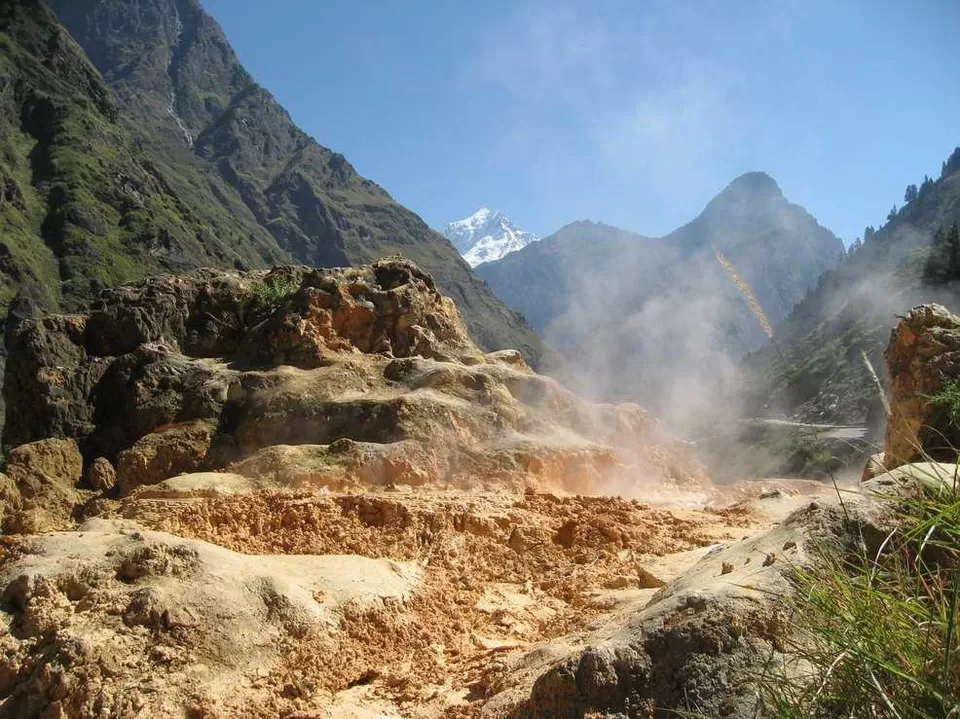
Tips for Visiting Tapovan
Tapovan is a place that requires a lot of planning, preparation, and execution. Here are some tips that will help you make your trip to Tapovan a smooth and memorable one:
Best Season: The best season to visit Tapovan is from June to October, when the weather is pleasant and the flowers are in full bloom. The winter season is not advisable, as the region is covered with snow and the roads are blocked.
Weather Conditions: The weather conditions in Tapovan are unpredictable and can change rapidly. The temperature can range from 15°C to -5°C, depending on the time of the day and the month of the year. The rainfall can be heavy and frequent, especially during the monsoon season. The wind can be strong and chilly, especially at higher altitudes. It is advisable to check the weather forecast before starting the trek and carry appropriate clothing and gear accordingly.
Entry Fee: The entry fee for Tapovan is Rs. 150 for Indians and Rs. 600 for foreigners. The entry fee is valid for three days and includes the entry to Valley of Flowers and Hemkund Sahib as well. The entry fee can be paid at the forest check post at Govindghat or Ghangaria. The entry fee is non-refundable and non-transferable.
Permits: The permits for Tapovan are required for both Indians and foreigners. The permits can be obtained from the forest department office at Joshimath or Govindghat. The permits are issued on a first-come-first-serve basis and are subject to availability. The permits are valid for three days and include the permits for Valley of Flowers and Hemkund Sahib as well. The permits cost Rs. 50 for Indians and Rs. 200 for foreigners. The permits are non-refundable and non-transferable.
Guides: The guides for Tapovan are optional but recommended, especially for first-time trekkers or solo travelers. The guides can help you with the route, the terrain, the weather, the safety, and the local information. The guides can be hired from Joshimath or Govindghat, and can charge anywhere from Rs. 500 to Rs. 1000 per day, depending on their experience and expertise. The guides are licensed and registered by the forest department and the tourism department.
Accommodation: The accommodation options for Tapovan are limited and basic, as it is situated at a high altitude and remote location. The only suitable accommodation in Tapovan is tents, which can be rented from the local villagers or the trek operators. The tents are spacious and comfortable, and can accommodate up to four people. The tents are equipped with sleeping bags, mattresses, pillows, and blankets. The tents also have a common kitchen and dining area, where you can enjoy hot and delicious meals prepared by the staff. The tents cost Rs. 500 to Rs. 1000 per person per night, depending on the season and the availability.
Packing List: The packing list for Tapovan is essential and specific, as it involves a lot of trekking and camping. Here are some of the items that you should pack for your trip to Tapovan:
Backpack: A sturdy and spacious backpack that can fit all your belongings and can be carried comfortably on your shoulders.
Clothing: Warm and layered clothing that can protect you from the cold and the wind. Some of the clothing items that you should pack are jackets, sweaters, thermals, trousers, socks, gloves, caps, and scarves. You should also pack some light and breathable clothing for the lower altitudes and the daytime.
Footwear: Durable and waterproof footwear that can provide you with a good grip and support on the rocky and slippery terrain. Some of the footwear items that you should pack are trekking shoes, sandals, and slippers. You should also pack some extra pairs of socks and shoe laces.
Accessories: Useful and handy accessories that can enhance your trekking and camping experience. Some of the accessories that you should pack are sunglasses, sunscreen, lip balm, torch, water bottle, trekking pole, knife, whistle, compass, map, camera, power bank, and charger.
Toiletries: Personal and hygienic toiletries that can keep you clean and fresh throughout the trip. Some of the toiletries that you should pack are toothbrush, toothpaste, soap, shampoo, towel, tissue paper, wet wipes, sanitizer, and toilet paper.
Medicines: Essential and emergency medicines that can prevent or treat any illness or injury that may occur during the trip. Some of the medicines that you should pack are painkillers, antiseptics, bandages, cotton, gauze, plasters, anti-allergic, anti-diarrheal, anti-nausea, anti-inflammatory, and altitude sickness tablets. You should also pack your personal prescription medicines, if any.
Documents: Important and valid documents that can prove your identity and eligibility for the trip. Some of the documents that you should pack are passport, visa, permit, entry fee receipt, ID proof, address proof, and emergency contact details. You should also pack some photocopies and digital copies of your documents, in case of loss or damage.
Risks and Dangers: The risks and dangers of visiting Tapovan are real and serious, and should not be taken lightly. Some of the risks and dangers that you may face are:
Altitude Sickness: Altitude sickness is a condition that occurs when the body does not get enough oxygen at high altitudes. It can cause symptoms such as headache, nausea, vomiting, dizziness, fatigue, and loss of appetite. It can also lead to complications such as pulmonary edema or cerebral edema, which can be fatal. To prevent or treat altitude sickness, you should acclimatize properly, drink plenty of water, avoid alcohol and tobacco, and take medicines such as Diamox or Aspirin.
Cold Temperature: The cold temperature in Tapovan can cause hypothermia, frostbite, or chilblains. Hypothermia is a condition that occurs when the body temperature drops below 35°C. It can cause symptoms such as shivering, confusion, slurred speech, and unconsciousness. Frostbite is a condition that occurs when the skin and tissues freeze due to exposure to cold. It can cause symptoms such as numbness, blisters, and gangrene. Chilblains are small, red, and itchy swellings that occur on the skin due to repeated exposure to cold and damp. To prevent or treat cold temperature, you should wear warm and layered clothing, cover your head, hands, and feet, and use heaters or fireplaces.
Rocky Terrain: The rocky terrain in Tapovan can cause injuries, accidents, or landslides. The rocks can be sharp, loose, or slippery, and can cause cuts, bruises, sprains, or fractures. The rocks can also fall or slide due to gravity, wind, or rain, and can cause damage or death. To prevent or treat rocky terrain, you should wear durable and waterproof footwear, use a trekking pole, follow the guide, and avoid the unstable or steep areas.
Wild Animals: The wild animals in Tapovan can cause attacks, bites, or infections. The animals can be aggressive, territorial, or rabid, and can cause harm or death. Some of the animals that you may encounter are deer, foxes, leopards, bears, and monkeys. To prevent or treat wild animals, you should avoid feeding, provoking, or approaching them, carry a whistle or a stick, and take anti-rabies vaccination.
Do’s and Don’ts: The do’s and don’ts of visiting Tapovan are simple and sensible, and should be followed by everyone. Some of the do’s and don’ts are:
- Do respect the local culture, religion, and customs of Tapovan and Joshimath. Do not hurt the sentiments or beliefs of the people or the places.
- Do preserve the environment, ecology, and beauty of Tapovan and Joshimath. Do not litter, pollute, or damage the nature or the wildlife.
- Do follow the safety rules, regulations, and instructions of Tapovan and Joshimath. Do not take any unnecessary risks, shortcuts, or deviations.
- Do enjoy the hot springs, the mountain views, and the trekking experience of Tapovan and Joshimath. Do not miss the opportunity to witness the mini heaven on earth.
FAQs about Tapovan
Here are some of the most frequently asked questions about Tapovan, along with their answers:
How to reach Tapovan from Joshimath or other nearby places?
You can reach Tapovan from Joshimath by road and by foot. The road distance is 25 km, which can be covered by a taxi or a bus. The foot distance is 20 km, which can be covered by trekking or by hiring a pony or a porter.
What are the best hotels or camping options near Tapovan?
The best hotels or camping options near Tapovan are tents, which can be rented from the local villagers or the trek operators. The tents are spacious and comfortable, and can accommodate up to four people. The tents are equipped with sleeping bags, mattresses, pillows, and blankets. The tents also have a common kitchen and dining area, where you can enjoy hot and delicious meals prepared by the staff. The tents cost Rs. 500 to Rs. 1000 per person per night, depending on the season and the availability.
What are the other places to visit in Joshimath or around Tapovan?
The other places to visit in Joshimath or around Tapovan are Auli, Narsingh Temple, Kalpavriksha, Vishnuprayag, Govindghat, Ghangaria, Valley of Flowers, Hemkund Sahib, and Bhavishya Badri. You can visit these places by road, by foot, or by cable car, depending on their location and accessibility.
How to book a trek to Tapovan online or offline?
You can book a trek to Tapovan online or offline, depending on your preference and convenience. You can book online through various websites, apps, or portals, such as Tripoto, Thrillophilia, Indiahikes, etc. You can book offline through various agencies, operators, or guides, such as Joshimath Tourism, Tapovan Trekking, Himalayan Adventure, etc.
What are the emergency contacts or helplines for Tapovan?
The emergency contacts or helplines for Tapovan are as follows:
Forest Department Office, Joshimath: 01389-222118
Forest Department Office, Govindghat: 01389-222119
Tourism Department Office, Joshimath: 01389-222118
Tourism Department Office, Govindghat: 01389-222119
Police Station, Joshimath: 01389-222100
Police Station, Govindghat: 01389-222101
Hospital, Joshimath: 01389-222102
Hospital, Govindghat: 01389-222103
Conclusion
Tapovan Joshimath is a place that offers a unique and unforgettable experience to the visitors. It is a place where you can enjoy the hot springs, the mountain views, and the trekking adventure. It is also a place where you can explore the history, culture, and spirituality of Tapovan and Joshimath. Tapovan Joshimath is a place that will make you fall in love with nature, adventure, and yourself. So, what are you waiting for? Book your trip to Tapovan Joshimath today and witness the mini heaven on earth.
Thank you for reading this article, and we hope you found it informative and helpful. If you have any questions, comments, or feedback, please feel free to share them with us. We would love to hear from you. Happy travelling!





